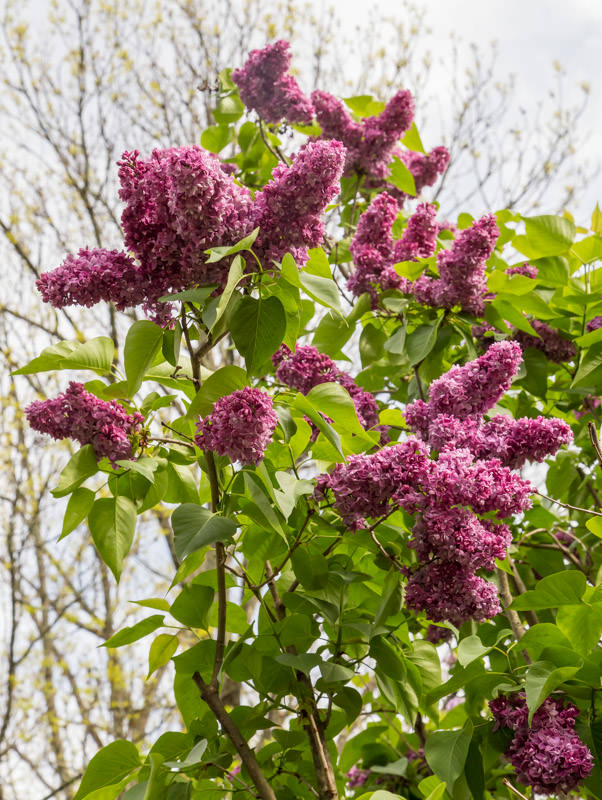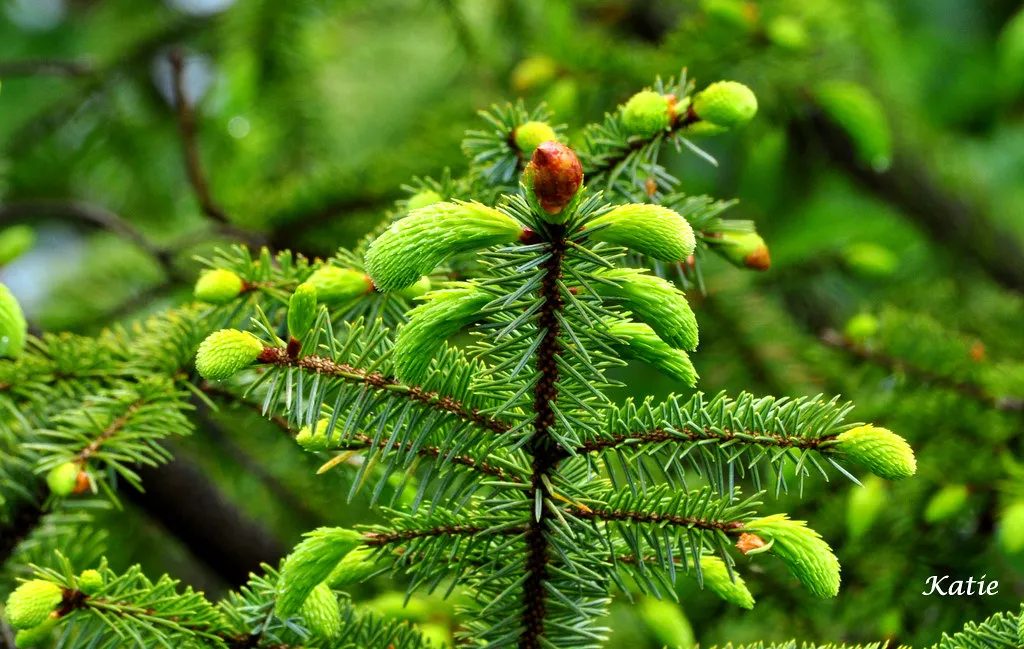To eliminate mildew on lilacs, trim affected areas and apply a fungicide. Regular maintenance restores their beauty.
Lilacs are beloved for their fragrant blooms and vibrant colors. Unfortunately, mildew can mar their appearance and health. Addressing mildew promptly ensures your lilacs remain stunning. Start by removing infected parts and improving air circulation around the plant. Use a fungicide to treat the mildew and prevent future outbreaks.
Regularly inspect and care for your lilacs to maintain their beauty and vigor. Proper pruning, watering, and feeding are crucial. By taking these steps, your lilacs will thrive, offering lush, beautiful blooms year after year.

Credit: clcdesign.com
Introduction To Lilac Care
Lilacs are beautiful and fragrant flowers that can brighten any garden. Proper care ensures they stay vibrant and healthy. This guide will help you understand the essentials of lilac care, focusing on keeping them free from mildew and restoring their beauty.
Importance Of Healthy Lilacs
Healthy lilacs offer numerous benefits:
- Enhanced Beauty: Vibrant flowers add color and charm to gardens.
- Fragrance: Healthy lilacs produce a delightful scent.
- Longevity: Well-cared lilacs can thrive for many years.
Common Lilac Problems
Even with the best care, lilacs can face various issues. Here are some common problems:
| Problem | Symptoms | Solution |
|---|---|---|
| Mildew | White powder on leaves | Apply a fungicide |
| Leaf Spots | Brown or black spots on leaves | Remove affected leaves |
| Poor Bloom | Few or no flowers | Ensure proper sunlight |
Proper care can prevent these problems. Regularly inspect your lilacs for signs of trouble. Early detection can save your plants and keep them healthy.
Identifying Mildew On Lilacs
Lilacs are beautiful, fragrant plants that enhance any garden. Unfortunately, they are susceptible to a common problem: mildew. Identifying mildew early is crucial for maintaining your lilac’s health and beauty.
Signs Of Mildew
Mildew on lilacs manifests in several ways. Early detection can save your plant.
- White or Gray Patches: Look for powdery spots on leaves.
- Distorted Leaves: Leaves may curl or become misshapen.
- Yellowing: Infected leaves often turn yellow before falling off.
- Reduced Bloom: Mildew can lead to fewer, smaller flowers.
Types Of Mildew
Two main types of mildew affect lilacs: powdery mildew and downy mildew.
| Type | Description | Symptoms |
|---|---|---|
| Powdery Mildew | Common in warm, dry conditions. | White, powdery spots on leaves and stems. |
| Downy Mildew | Thrives in cool, moist environments. | Yellow or white patches on the underside of leaves. |
Recognizing these types of mildew helps you take appropriate action. Regular inspection of your lilacs can prevent severe infestations. Healthy, vibrant lilacs are just a few steps away!
Causes Of Mildew In Lilacs
Understanding the causes of mildew in lilacs is crucial. This helps in preventing and treating the issue effectively. Several factors contribute to mildew growth. Let’s dive into the main reasons lilacs suffer from mildew.
Environmental Factors
Environmental factors play a significant role in the development of mildew on lilacs. These shrubs prefer a specific climate. When this climate is off-balance, mildew can thrive.
- Humidity: High humidity levels create a perfect environment for mildew. Lilacs need a balance of moisture and dryness.
- Temperature: Warm temperatures combined with high humidity increase the risk of mildew. The ideal temperature range for lilacs is between 60°F and 70°F.
- Rainfall: Excessive rain can lead to mildew. Waterlogged soil and wet leaves create a breeding ground for mildew spores.
By managing these environmental factors, you can reduce the risk of mildew on your lilacs.
Poor Air Circulation
Poor air circulation is another major cause of mildew in lilacs. When air cannot flow freely around the plant, moisture gets trapped. This trapped moisture promotes mildew growth.
Here are some common reasons for poor air circulation:
- Dense Planting: Planting lilacs too close together restricts airflow. Each plant needs enough space to breathe.
- Overgrown Branches: Unpruned branches can become too dense. Regular pruning helps in maintaining good airflow.
- Nearby Structures: Buildings, walls, or fences near lilacs can block airflow. Ensure lilacs are planted in an open space.
Improving air circulation helps keep lilacs healthy and mildew-free.

Credit: www.gutenberg.org
Preventing Mildew
Maintaining the beauty of your lilacs involves preventing mildew. Mildew can make lilacs look unsightly. Follow these steps to protect your lilacs.
Proper Spacing
Proper spacing helps prevent mildew. Lilacs need space to breathe and grow. Plant lilacs at least six feet apart. This ensures good air circulation. Proper spacing reduces humidity around plants. Humidity fosters mildew growth.
| Plant Type | Recommended Spacing |
|---|---|
| Lilac Bushes | 6 feet apart |
Regular Pruning
Regular pruning keeps lilacs healthy. Prune lilacs after they bloom. Remove dead or diseased branches. Cut back overgrown areas to allow light and air. Pruning helps reduce mildew risk.
- Prune after blooming
- Remove dead branches
- Cut back overgrown areas
Healthy lilacs are less likely to get mildew. Follow these tips to keep your lilacs beautiful and thriving.
Natural Remedies For Mildew
Dealing with mildew on your lilacs can be frustrating. Fortunately, natural remedies can help. These solutions are easy to make and use. They are safe for your plants and the environment.
Homemade Sprays
Homemade sprays are effective against mildew. They are simple to prepare with ingredients from your kitchen.
- Baking Soda Spray: Mix 1 tablespoon of baking soda with 1 gallon of water. Add a few drops of liquid soap. Spray this solution on the affected areas.
- Milk Spray: Combine 1 part milk with 2 parts water. Spray this mixture on your lilacs weekly.
- Apple Cider Vinegar Spray: Mix 2-3 tablespoons of apple cider vinegar with 1 gallon of water. Apply to the plants in the morning.
Organic Fungicides
Organic fungicides are another great option. They are effective and safe for your garden. Here are some examples:
| Fungicide | Ingredients | Application |
|---|---|---|
| Neem Oil | Neem oil, water, liquid soap | Mix according to package instructions. Spray on affected areas. |
| Garlic Spray | Crushed garlic, water | Steep crushed garlic in water overnight. Strain and spray on plants. |
Using these natural remedies can help keep your lilacs healthy. They will restore the beauty of your garden.
Chemical Solutions
Reviving your lilacs from mildew can seem challenging. Chemical solutions offer effective ways to eliminate mildew and restore your lilac’s beauty. This section will guide you through choosing the right fungicide and safe application techniques.
Choosing The Right Fungicide
Selecting the right fungicide is crucial. Not all fungicides work on mildew. Look for products labeled for mildew control. Here are some options:
- Neem Oil
- Chlorothalonil
- Myclobutanil
- Potassium Bicarbonate
Neem Oil is organic and safe for most plants. Chlorothalonil is a broad-spectrum fungicide and effective for mildew. Myclobutanil works well but is synthetic. Potassium Bicarbonate changes the pH level, making it hard for mildew to survive.
Safe Application Techniques
Applying fungicides safely is essential. Follow these steps to ensure effectiveness and safety:
- Read the label instructions carefully.
- Wear protective gloves and clothing.
- Apply fungicide in the morning or evening.
- Avoid spraying on windy days.
- Ensure even coverage on all leaves.
Always start with a small test area. Monitor for any adverse reactions. Repeat applications as suggested on the product label.
Following these steps ensures effective mildew control and restores your lilac’s beauty.
Restoring Lilac’s Beauty
Restoring the beauty of your lilac bush is possible. Follow these steps to revive your lilac and keep it healthy. Proper care ensures your lilac flourishes and blooms beautifully.
Post-treatment Care
After treating mildew, focus on post-treatment care. This ensures your lilac recovers fully.
- Watering: Water the lilac bush at its base. Avoid wetting the leaves.
- Pruning: Remove any infected leaves and branches. Use clean tools.
- Fertilizing: Apply a balanced fertilizer. Follow the instructions carefully.
Ongoing Maintenance Tips
Regular maintenance keeps your lilac healthy and prevents mildew.
- Proper Air Circulation: Ensure good airflow around the bush. Trim surrounding plants if necessary.
- Regular Inspections: Check for signs of mildew weekly. Act quickly if you see any.
- Mulching: Apply mulch around the base. It helps retain moisture and keep weeds away.
By following these tips, your lilac will thrive and stay beautiful. Enjoy the stunning blooms and vibrant colors. Happy gardening!
Long-term Lilac Health
Ensuring the long-term health of your lilac bushes is essential for their beauty. Healthy lilacs are less prone to mildew and other diseases. This section explores key practices for maintaining lilac health, focusing on soil, fertilization, and seasonal care routines.
Soil And Fertilization
Healthy soil is the foundation of vibrant lilacs. Lilacs prefer well-drained soil. Ensure your soil has a pH level between 6.0 and 7.5. Use a soil testing kit for accuracy.
Fertilization boosts lilac growth. Use a balanced fertilizer, such as 10-10-10, in early spring. Avoid over-fertilizing, which can cause excessive leafy growth.
Amend your soil with organic matter. Add compost or well-rotted manure to enrich the soil. This helps retain moisture and provides essential nutrients.
Seasonal Care Routines
Establishing seasonal care routines ensures your lilacs thrive year-round. Each season requires specific tasks to maintain health and beauty.
- Spring: Prune dead or diseased branches. Fertilize and mulch the base. Ensure adequate water during dry spells.
- Summer: Check for mildew and pests. Apply fungicide if necessary. Water deeply during hot, dry periods.
- Fall: Prune after blooming. Remove spent flowers to prevent seed formation. Mulch to protect roots during winter.
- Winter: Water sparingly. Protect young plants with burlap wraps. Avoid heavy pruning during this season.
By following these seasonal care routines, your lilacs will remain healthy and beautiful for years to come.

Credit: echters.com
Frequently Asked Questions
How Do I Identify Mildew On Lilacs?
Mildew appears as a white, powdery substance on lilac leaves and stems. It often causes discoloration and distorted growth. Early detection is key to prevent further spread.
What Causes Mildew On Lilac Bushes?
Mildew thrives in warm, humid conditions with poor air circulation. Overcrowded plants and excessive shade can also contribute to mildew development. Regular maintenance can mitigate these factors.
Can Mildew Damage Lilac Plants?
Yes, mildew can weaken lilacs by interfering with photosynthesis. This results in reduced blooms and overall plant health. Timely treatment can prevent severe damage and restore plant vitality.
How Do I Treat Mildew On Lilacs?
Treat mildew by pruning affected areas and improving air circulation. Use fungicides specifically designed for mildew on lilacs. Follow all label instructions carefully.
Conclusion
Reviving your lilac’s beauty is achievable with the right care. By tackling mildew and maintaining healthy practices, your lilac will flourish. Regular pruning and proper watering are essential. Embrace these steps to enjoy vibrant, mildew-free lilacs year after year. Happy gardening!


